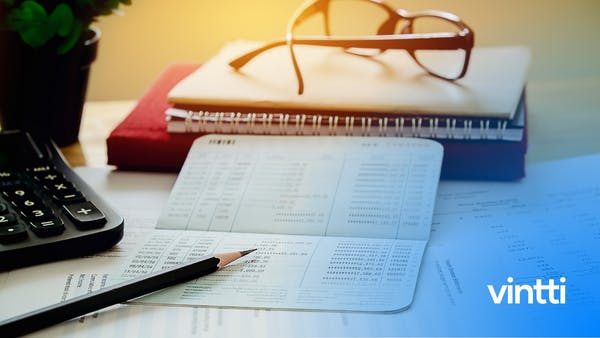When it comes to reporting capital gains and losses from selling assets, most taxpayers would agree that navigating IRS Form 8949 can be confusing.
But having a clear understanding of this form's purpose, requirements, and step-by-step instructions can simplify the reporting process.
In this article, you'll get a comprehensive overview of Form 8949, from who must file and important deadlines, to details on completing each section, integrating with Schedule D, special reporting scenarios, e-filing options, and key next steps after filing.
Introduction to Form 8949: Understanding Capital Assets Sales Reporting
Exploring the Purpose of Form 8949
Form 8949 is used to report capital gains and losses from the sale of capital assets to the IRS. It provides the details on each sale, which get summarized on Schedule D and then transferred to your Form 1040.
Some key points about Form 8949:
- Used to report sale of capital assets like stocks, bonds, investment property, etc.
- Provides specifics on date acquired, date sold, sales price, cost basis, gain/loss
- Flows data to Schedule D to calculate net capital gain/loss
- Net capital gain/loss from Schedule D flows into Form 1040
- Helps IRS validate capital gains tax compliance
So in summary, Form 8949 creates a paper trail documenting your capital asset transactions, which gets summarized on Schedule D and then impacts your total income tax obligation.
Identifying Who Must File Form 8949
You must file Form 8949 if:
- You sold a capital asset in the tax year
- You received a Form 1099-B reporting sale of stocks, bonds, etc.
- Your capital losses exceed $3,000 ($1,500 if married filing separately)
- You received capital gain distributions as a mutual fund shareholder
- You had capital gain/loss from Bitcoin or other cryptocurrency
So generally, if you sold stocks, bonds, ETFs, investment property, or other capital assets, you will need to file Form 8949. Most tax software like TurboTax will automatically generate Form 8949 based on any capital transactions.
Key Deadlines for Form 8949 Filing in 2023
The deadlines to file your 2023 taxes with Form 8949 are:
- April 15, 2024: Standard filing deadline
- October 15, 2024: Deadline for filing extension
It's important to file Form 8949 with your tax return by the deadline to avoid penalties and interest charges. Tax software can help track capital transactions and automatically generate Form 8949.
What is form 8949 sales and other dispositions of capital assets?
Form 8949 is an IRS tax form used to report capital gains and losses from the sale of capital assets like stocks, bonds, mutual funds, and real estate. This form provides the details that support the capital gains and losses totals reported on Schedule D of Form 1040.
Some key points about Form 8949:
- Used to report details on capital assets sold during the tax year, like date acquired, date sold, sales price, cost basis, and gain/loss
- Allows you to list short-term and long-term transactions separately
- Requires you to enter an alphanumeric code to explain the type of transaction
- Flows data to Schedule D (Form 1040) to summarize your overall capital gains and losses
- Helps determine whether capital gains are taxed at short-term or long-term rates
- Allows the IRS to cross-check your transactions against 1099-B forms filed by brokers
In summary, Form 8949 provides the supporting details on capital asset sales that ultimately flow into Schedule D and Form 1040 to properly calculate the tax impact of your investment transactions for the year. Carefully reporting this information allows capital gains and losses to be correctly categorized and taxed at the appropriate rates.
Which of the following forms is used for reporting sales and other dispositions of capital assets?
Form 8949 is the IRS form used for reporting sales and other dispositions of capital assets. Specifically:
-
Form 8949, Sales and Other Dispositions of Capital Assets is used by individual taxpayers to report capital gains and losses from investments and other capital assets. This includes stocks, bonds, mutual funds, and property sales.
-
Form 8949 provides the details that get transferred to Schedule D, which then flows into Form 1040 for individual tax filers.
-
Partnerships, corporations, trusts, and estates also use Form 8949 to report capital gains and losses. These entities would file Schedule D along with Form 1065, Form 1120, Form 1041, respectively.
So in summary, Form 8949 is the key IRS form for reporting capital gains and losses from the sale of investments and other capital assets across individual, partnership, corporate, trust, and estate tax returns. It provides the supporting details that ultimately make their way into the respective main tax forms those entities file.
What transactions are not reported on form 8949?
Form 8949 is used to report capital gains and losses from the sale of capital assets, such as stocks, bonds, mutual funds, and real estate. However, not all transactions need to be reported on this form.
Here are some examples of transactions that do not need to be reported on Form 8949:
-
Transactions and basis not reported to the IRS (Box B): If you sold an asset in a private transaction where the basis and sale details were not reported to the IRS, you do not have to report it on Form 8949. For example, if you sold a used car to a friend for cash.
-
Transactions (but not basis) not reported to the IRS (Box C): If the transaction details (like sale price and date) were not reported to the IRS but you do know the basis, you still need to report the transaction on Form 8949 but can check the Box C indicating basis was not reported.
-
Personal use assets: Selling assets held for personal use, like a personal car, do not need to be reported.
-
Salary or wage income: Form 8949 is for capital gains and losses only, not for reporting salary, wage or ordinary income.
So in summary, only sales of capital assets where the basis and/or transaction was reported to the IRS need to be included on Form 8949 when filing your tax return. Private party transactions without 1099 reporting or sales of personal-use assets do not get reported on this form.
How do I know if I need to file form 8949?
Individuals use Form 8949 to report the sale or exchange of capital assets not reported on another form or schedule. Here are some key situations where you would need to file Form 8949:
- You sold or exchanged a capital asset like stocks, bonds, mutual funds, etc. and received a Form 1099-B.
- You had capital gains from a partnership, S corporation, estate, or trust.
- You sold or exchanged real estate reported on Form 1099-S.
- You exchanged property or assets through a like-kind exchange.
- You had capital gains or losses from Bitcoin or other cryptocurrency transactions.
So in summary, if you have capital gains or losses during the tax year, you will likely need to file Form 8949 along with Schedule D to report those transactions. The exceptions are if the transactions are reported directly on another form like Form 4797.
If you are unsure whether you need to file Form 8949, consult the instructions or check with a tax professional. Having clear records like Forms 1099-B and documentation of your cost basis for sold assets will help determine if Form 8949 filing is required.
sbb-itb-beb59a9
Detailed Instructions for Completing Form 8949
Properly completing Form 8949 is critical for accurately reporting capital gains and losses from the sale of capital assets. This form outlines key information needed to calculate cost basis, determine holding periods, and classify gains and losses.
Understanding Form 8949 Boxes and Codes
When filling out Form 8949, it is important to understand the purpose of each box and code:
- Box A: Report short-term transactions for which basis is reported to the IRS
- Box B: Report short-term transactions for which basis is not reported to the IRS
- Box C: Report long-term transactions for which basis is reported to the IRS
- Box D: Report long-term transactions for which basis is not reported to the IRS
- Codes for Boxes A & C: Indicate where basis is being reported from (Form 1099-B, other statements, cost basis not reported, etc.)
Taking the time to accurately designate and sort each transaction using these boxes and codes ensures precise capital gains and losses reporting.
Calculating Cost Basis for Accurate Reporting
A key step is calculating the cost basis for each transaction - the original purchase price plus commissions, fees, and other costs. The difference between the sale price and cost basis equals the capital gain or loss. Basis reporting requirements differ for short-term vs long-term holdings.
For short-term holdings (owned 1 year or less):
- The cost basis is typically reported to you on Form 1099-B
- If basis is not reported, you must calculate and provide it
For long-term holdings (owned over 1 year):
- You must calculate and provide the cost basis for all transactions
Having meticulous records of purchase dates, prices paid, and costs is vital for computing accurate cost basis.
Navigating Short-term and Long-term Transactions
Classifying transactions as short-term or long-term is essential, as different tax rates apply:
- Short-term: Owned 1 year or less. Taxed at ordinary income rates.
- Long-term: Owned over 1 year. Typically taxed at lower long-term capital gains rates.
The short or long-term designation dictates which boxes (A & B or C & D) each transaction must be reported in. Carefully sorting each transaction using precise purchase and sale dates ensures proper classification and tax treatment.
Taking the time to understand codes, calculate cost basis, classify holding periods, and accurately enter details for each transaction results in a precisely completed Form 8949.
Integrating Form 8949 with Schedule D
Transferring Information from Form 8949 to Schedule D
To transfer information from Form 8949 to Schedule D (Form 1040), first total the amounts from all Forms 8949. Add together the short-term totals for columns (d), (e), and (f). Enter this total on Schedule D, Part I, line 1a. Repeat this for the long-term totals and enter on Schedule D, line 8a. These carryover totals summarize your capital gains and losses.
Next, combine the short-term transactions with long-term transactions for each type (gains or losses). Enter the overall gains on Schedule D, line 6 and overall losses on line 14. These totals factor into calculating capital gain or loss to report on your Form 1040.
Understanding IRS Schedule D Instructions
The IRS Schedule D instructions provide specific directions on carrying over the subtotals from Form 8949. Key aspects include:
- Enter short-term totals on Schedule D, line 1a and long-term totals on line 8a
- Combine totals for overall capital gains and losses on Schedule D, lines 6 and 14
- Report the final net capital gain or loss on Schedule D, line 16
- Carry the Schedule D totals to Form 1040 to calculate tax
Following these instructions carefully when transferring data from Form 8949 to Schedule D ensures accurate tax reporting that aligns with IRS rules.
Reconciling Capital Gains and Losses with Form 1040
The net capital gain or loss amount from Schedule D, line 16 carries over to Form 1040. This amount factors into calculating total income and adjusted gross income for the tax year.
Specifically, capital gains or losses combine with other categories of income, such as wages, interest, dividends to determine total taxable income. The adjusted capital gain or loss can increase or decrease total income subject to tax.
Completing Schedule D provides reconciliation between detailed capital asset transactions reported on Form 8949 and summarization on Form 1040 for proper income tax calculation. This ensures gains and losses are correctly accounted for based on IRS regulations.
Special Reporting Scenarios for Form 8949
Handling Form 8949 Crypto Transactions
When reporting cryptocurrency transactions on Form 8949, there are a few special considerations to keep in mind:
-
Cryptocurrencies are treated as capital assets, similar to stocks or bonds. Any gains or losses from selling or exchanging crypto must be reported.
-
The cost basis for crypto is generally the amount you paid for it in U.S. dollars at the time of purchase. Proper documentation is essential.
-
Most crypto exchanges do not provide Form 1099-B, so you need to calculate gains/losses yourself. Be sure to account for transaction fees in cost basis.
-
If you traded one crypto for another, that is considered a taxable event. You must calculate the fair market value of the crypto in USD at time of trade.
-
Crypto gifts, forks, mining and airdrops may also need to be reported. Rules are still developing in this area.
-
Significant penalties can apply for failure to properly report crypto transactions. Maintain thorough records and report accurately.
Dealing with Wash Sales and Other Adjustments
The IRS wash sale rule prevents claiming tax losses from securities sold at a loss and repurchased within 30 days. A wash sale causes the capital loss to be deferred to the new purchase date.
Other Form 8949 adjustments may involve:
- Return of capital distributions from stock investments
- Worthless securities
- Short sales
- Option transactions like lapses, closures, etc.
All these adjustments must be reported correctly on Form 8949 and Schedule D, with proper documentation for cost basis and dates. IRS Publication 550 has further guidance.
Reporting Inherited and Gifted Assets
For inherited assets, the cost basis is generally the fair market value on the date of the original owner's death. This new basis is called a "stepped-up basis".
However for 2010 inherited assets, special rules may apply depending on the estate's tax election. Consult IRS Publication 551 for details.
For gifted assets, the basis is generally the same as the original owner's basis prior to the gift. Exceptions apply if the fair market value was lower than the donor's basis at the time of gift. In this case, the fair market value becomes the new basis for tax calculations by the recipient.
In either case, properly documenting the new basis and acquisition date is key when reporting inherited or gifted assets on Form 8949.
Electronic Filing Options for Form 8949
E-filing Form 8949 with supporting documents provides several advantages over paper filing. IRS e-file and tax preparation software offer convenient ways to submit your return electronically.
E-file with Form 8949 PDF Attachments
The IRS allows taxpayers to e-file their tax return and attach supporting PDFs, such as Form 8949. To do this:
- Prepare your Form 8949 as a PDF file
- E-file your tax return through an authorized provider
- When prompted, select the option to include supplementary files
- Attach your completed Form 8949 PDF
E-filing with direct PDF attachments allows you to file electronically while still including all information required by Form 8949.
Key benefits include:
- Faster processing than paper filing
- Error checking for accuracy
- Faster refunds (if owed one)
- Secure transmission of financial data
- Confirmation that the IRS received your return
Using Tax Software like Form 8949 TurboTax Integration
Tax preparation software like TurboTax conveniently integrates Form 8949 and other schedules into your electronic filing process.
When you import tax forms like 1099-Bs, the software auto-populates cost-basis information from those forms onto Form 8949 for you. This makes filing complex investment transactions much simpler.
Benefits of using tax software to e-file Form 8949:
- Pre-populated forms save time and reduce errors
- Easy import of tax documents like 1099-Bs
- Optimized to maximize deductions
- Secure end-to-end e-filing process
- Guidance if questions come up while filing
IRS Free File and Other Online Services
The IRS offers free e-filing options for taxpayers meeting certain criteria. This includes the IRS Free File program, accessible through IRS.gov.
Additionally, many tax software providers offer free filing versions for simple returns. This allows e-filing Form 8949 along with a standard 1040 form.
Check your eligibility for free, guided e-filing on the IRS website. For more complex returns, paid tax software can facilitate e-filing deep integrations like importing investment tax documents.
Conclusion: Final Thoughts on Form 8949 Filing
Recap of Form 8949 Reporting Essentials
Accurately reporting capital gains and losses on Form 8949 is critical for proper tax filing. Key takeaways include:
- Report each transaction on a separate row with accurate dates, descriptions, and cost basis details
- Classify transactions as short-term or long-term based on holding period
- Total all short-term and long-term transactions separately
- Transfer totals to Schedule D to summarize overall capital gains/losses
- Retain thorough documentation to support basis calculations
- File Form 8949 with Schedule D and Form 1040 by April 15 deadline
Carefully reviewing 1099-B forms and maintaining detailed records are essential to avoiding IRS scrutiny.
Next Steps After Filing Form 8949
After filing Form 8949, taxpayers should:
- Keep copies of Form 8949, Schedule D, and supporting documents for at least 3 years
- Review any IRS notices related to capital gains reporting and respond promptly
- Consider estimated tax payments for the following year if large investment transactions are expected
- Set reminders for key deadlines and organize records systematically for easier reporting next year
Proper documentation and organization can simplify the capital gains reporting process for future tax years.




